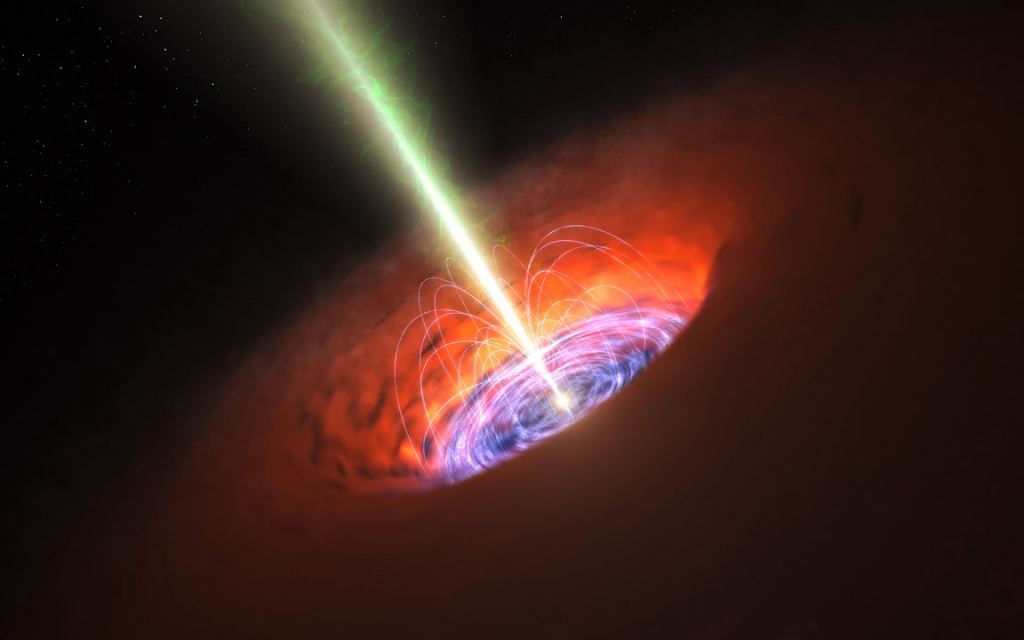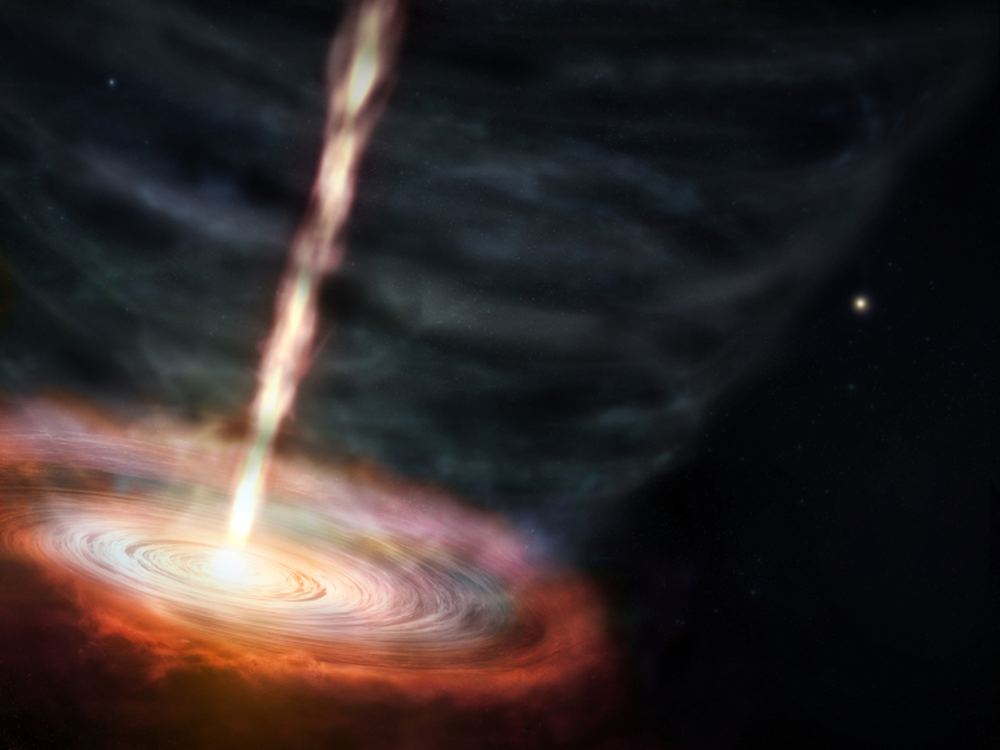MWC 349A is a star about 3,900 light-years away in the constellation Cygnus. It’s huge, about 38 times as massive as the Sun. It’s actually a binary star and may even be a triple star. It’s an oddball and one of the brightest sources of radio emission in the sky.
One of the star’s unusual features is its natural maser. MWC 349A’s natural maser played a central role in a new discovery: the young star emits a blistering jet of material travelling at 500 km/sec (310 m/sec.) That discovery could help astronomers understand massive stars and their complexity.
Back in the 1960s, astronomers made a shocking discovery: molecular clouds in space could create natural masers. This was at a time when not all scientists agreed that there could even be molecules in space. They called the substance that created the maser mysterium, similar to how modern astronomers use the names dark matter and dark energy as placeholders for things not fully understood.
Eventually, scientists figured out that the maser was coming from hydroxide molecules, and now we know of hundreds of masers coming from different types of objects in space. A team of researchers used MWC 349A’s maser to study the star’s disk in greater detail than ever.
Masers are similar to their more well-known cousins, lasers. But while a laser is “light amplification by stimulated emission of radiation,” a maser is “microwave amplification by stimulated emission of radiation.” The main difference is that a maser uses the microwave portion of the electromagnetic spectrum while a laser uses the optical light portion of the EM spectrum.
Masers come from different astrophysical sources, including stars, comets, planets, and other objects in interstellar space.

MWC 349A is known as an oddball. It has unique features, including being one of the brightest radio sources in the sky. It’s also one of the best examples of a massive star surrounded by a photoevaporative disk that produces an outflow. One of the puzzles around the star is its age. It’s a luminous star that has both high mass loss and a surrounding disk of material. Those traits are shared by both young, pre-main sequence stars and older, highly-evolved stars.
While its evolutionary stage is uncertain, its mass isn’t. Massive stars like MWC 349A play an important role in the Universe. They forge heavy elements that are spread out into space when the stars die. By studying them, astronomers can learn more about the creation and distribution of the elements that make up planets and living things like us.
A team of researchers using the star’s maser to study it presented their findings at the 241st meeting of the American Astronomical Society (AAS) in Seattle, Washington.
The team found the star’s high-velocity jet using ALMA, the Atacama Large Millimetre/sub-millimetre Array. It detects microwave range radiation produced by MWC 349A’s maser, and the researchers traced the microwaves back to their source to study the star in more detail. A maser’s bright emissions act like a probe that can be used to study the source.
“A maser is like a naturally occurring laser,” said Sirina Prasad, an undergraduate research assistant at the Center for Astrophysics (CfA) and the lead author of the paper. “It’s an area in outer space that emits a really bright kind of light. We can see this light and trace it back to where it came from, bringing us one step closer to figuring out what’s really going on.”
When they traced the hydrogen maser back, they found the unexpected jet and more.
“We used masers generated by hydrogen to probe the physical and dynamic structures in the gas surrounding MWC 349A and revealed a flattened gas disk with a diameter of 50 au, approximately the size of the Solar System, confirming the near-horizontal disk structure of the star,” said Qizhou Zhang, a senior astrophysicist at CfA, and the project’s principal investigator. “We also found a fast-moving jet component hidden within the winds flowing away from the star.”
Other astrophysical objects like black holes can also emit jets. These astrophysical jets are a complex phenomenon, and their source is not yet well understood. But researchers know that in the case of a black hole’s jets, powerful magnetic fields likely play a role as they interact with disks of material. The same is likely true for MWC 349A, according to the paper.

“Our previous understanding of MWC 349A was that the star was surrounded by a rotating disk and photo-evaporating wind. Strong evidence for an additional collimated jet had not yet been seen in this system. Although we don’t yet know for certain where it comes from or how it is made, it could be that a magnetohydrodynamic wind is producing the jet, in which case the magnetic field is responsible for launching rotating material from the system,” says Prasad.
Massive stars like MWC 340A play a critical role in the Universe. Not only do they synthesize heavy elements, but they also influence the interstellar medium (ISM.) However, astrophysicists still have a lot of unanswered questions about these stars. What role do their powerful magnetic fields play, and how do they shape the disk out of which planets form? Do their fields act like a brake on the disk’s rotation? Does that help determine the types of planets that form?
There are dozens of published studies on MWC 340A and similar stars. This study shows that there’s always something new to discover. There’s some luck involved in this research because the maser happened to be pointing directly at Earth. The researchers were able to point ALMA right at the maser and follow it back to its source.
Lead author Prasad knows that there’s more to be discovered at MWC 340A and that the natural maser and the discovery of the jet will lead to even more questions and, hopefully, answers. “This could help us to better understand the disk-wind dynamics of MWC 349A and the interplay between circumstellar disks, winds and jets in other star systems,” Prasad said.
More:
- Press Release: Hydrogen Masers Reveal New Secrets of a Massive Star
- Wikipedia: MWC 349
- Universe Today: Incredible Image Shows Twin Stellar Jets Blasting Out of a Star-Forming Region

